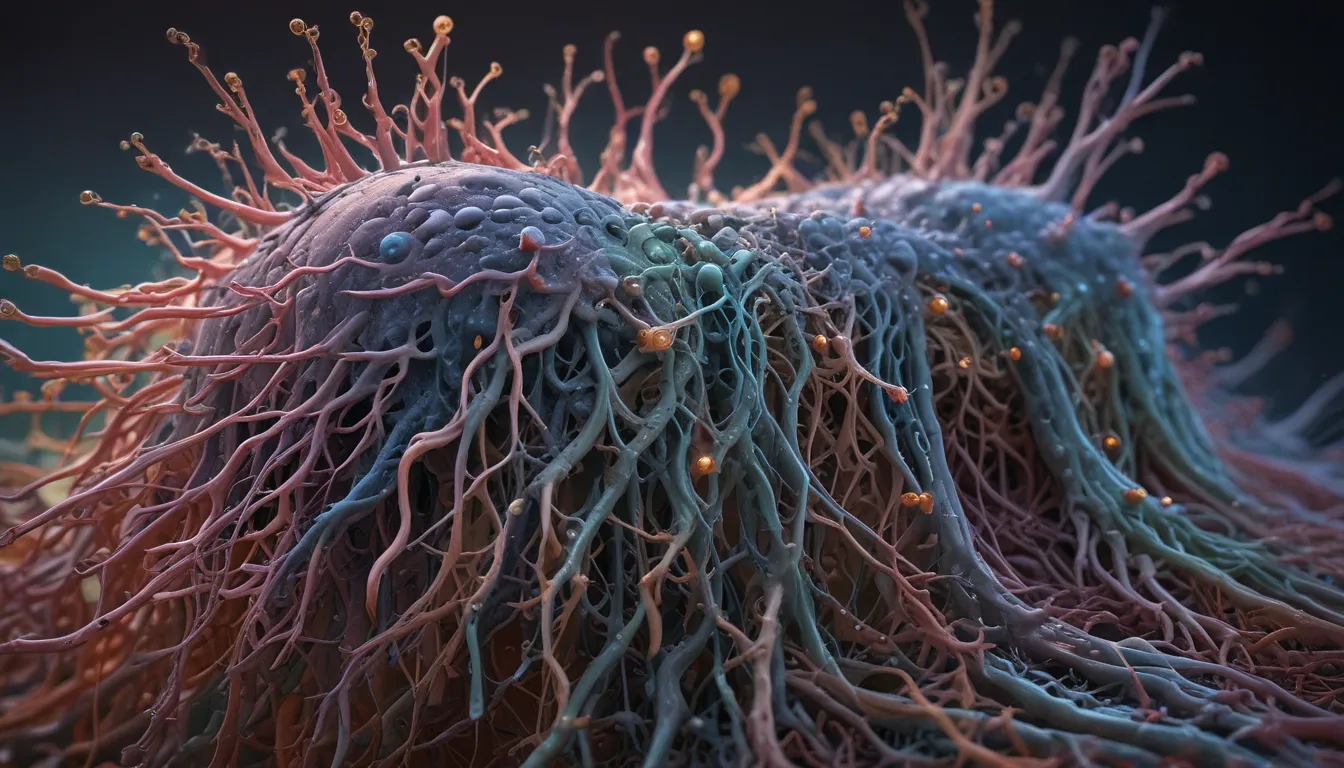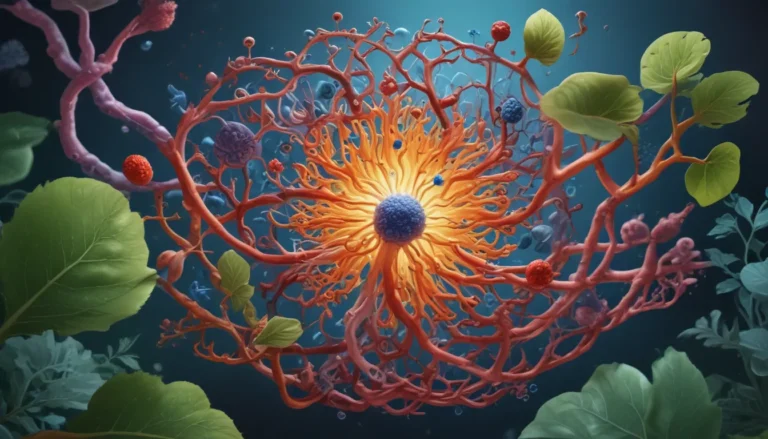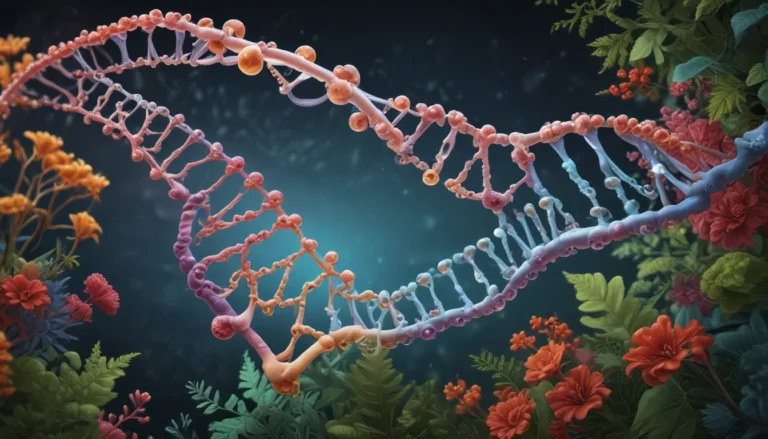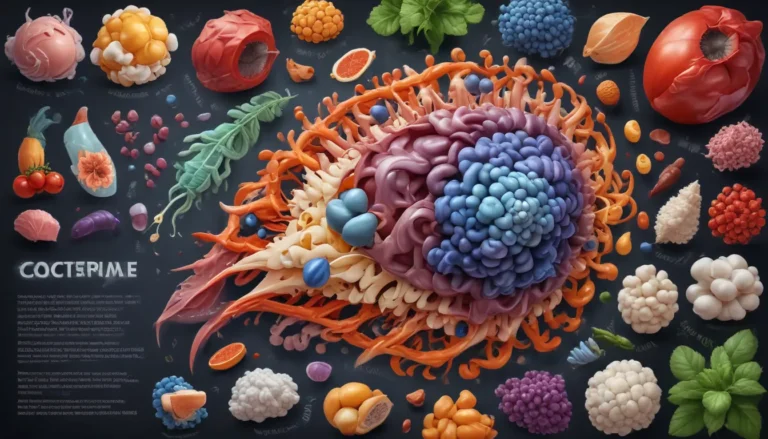A Note About Images: The images used in our articles are for illustration purposes only and may not exactly match the content. They are meant to engage readers, but the text should be relied upon for accurate information.
In the intricate world of cell biology, cell junctions serve as the essential bridges that connect cells together, enabling them to communicate, share resources, and coordinate their activities. These tiny structures are crucial for the organization and function of cells in multicellular organisms, playing a fundamental role in maintaining tissue integrity and functionality. From forming barriers to facilitating direct cell-to-cell communication, each type of cell junction possesses unique characteristics and functions that impact our biology in remarkable ways. In this article, we will delve into 18 fascinating facts about cell junctions, exploring their diverse roles, mechanisms, and implications in health and disease.
Understanding Cell Junctions: The Building Blocks of Interconnected Cells
Cell junctions are specialized structures that connect adjacent cells, providing mechanical support and enabling intercellular communication. These junctions are like the glue that holds cells together, ensuring they function as a cohesive unit. The intricate network of cell junctions plays a vital role in the development, organization, and proper functioning of tissues and organs in multicellular organisms.
Exploring the Diversity of Cell Junctions: Types and Functions
Tight Junctions: Gatekeepers of Cellular Barriers
Tight junctions serve as the gatekeepers between cells, forming a barrier that regulates the passage of molecules and ions through intercellular spaces. These junctions are crucial for maintaining tissue integrity and preventing leakage, playing a key role in the selective permeability of epithelial cell layers.
Adherens Junctions: Builders of Cell-to-Cell Adhesion
Adherens junctions are responsible for cell-to-cell adhesion, playing a crucial role in maintaining tissue structure and integrity. These junctions are composed of cadherin proteins that link cells together, organizing them into sheets and stabilizing tissues.
Desmosomes: Anchors in High-Stress Tissues
Desmosomes are mechanical junctions that provide strong adhesion between cells, particularly in tissues that undergo high mechanical stress, such as the skin and heart. These structures connect intermediate filaments of adjacent cells, providing structural support and stability.
Gap Junctions: Channels of Direct Communication
Gap junctions enable direct communication between cells, allowing the exchange of small molecules and ions. These junctions play a vital role in synchronizing cellular activities, coordinating tissue functions, and facilitating cellular signaling events.
Unraveling the Composition and Regulation of Cell Junctions
Cell junctions consist of transmembrane proteins, such as cadherins and connexins, which interact with cytoskeletal elements to maintain structural integrity. These dynamic structures can be remodeled in response to external stimuli, allowing for tissue adaptation and repair. Environmental factors, such as mechanical forces and cell density, can influence the formation and function of cell junctions, highlighting the intricate interplay between cells and their surroundings.
The Crucial Role of Cell Junctions in Biological Processes
Tissue Development: Orchestrating Proper Cell Arrangement
Cell junctions play a vital role in tissue development, ensuring proper cell arrangement, differentiation, and organization during embryogenesis. These structures are essential for the coordinated growth and development of tissues and organs.
Epithelial Barrier Function: Safeguarding Tissue Homeostasis
Tight junctions contribute to the selective permeability of epithelial cell layers, limiting the passage of substances and maintaining tissue homeostasis. These junctions are essential for the proper functioning of barriers such as the blood-brain barrier and the intestinal epithelium.
Implications in Disease: Linking Cell Junction Defects to Disorders
Defects in cell junctions have been linked to various diseases, including cancer, inflammatory bowel disease, and skin disorders. Abnormalities in these structures can disrupt tissue integrity and function, leading to a range of health conditions.
Unveiling the Intricacies of Cellular Signaling and Mechanotransduction
Cell junctions play a crucial role in cellular signaling events, influencing processes such as cell proliferation, differentiation, and apoptosis. These structures are also involved in mechanotransduction, converting mechanical forces into biochemical signals that regulate cell behavior and tissue remodeling. Understanding the mechanisms behind these intricate processes is essential for unraveling the complexities of cell biology and disease development.
Harnessing the Potential of Cell Junctions in Neural Connectivity and Beyond
Role in Neural Connectivity: Ensuring Proper Neuronal Communication
Cell junctions are crucial for establishing and maintaining synaptic connections between neurons, ensuring proper neuronal communication in the nervous system. These structures play a vital role in neural connectivity, facilitating the transmission of electrical signals and information between nerve cells.
Cell Junction Remodeling: Adapting to External Stimuli
Cell junctions are dynamic structures that can be remodeled in response to external stimuli, allowing for tissue adaptation and repair. This dynamic nature enables cells to respond to changing environmental cues, ensuring tissue integrity and function.
Diversity in Protein Composition: Specialized Functions in Different Tissues
Cell junctions exhibit a remarkable diversity in their protein composition, allowing for specialized functions in different tissues and cell types. The unique composition of each type of junction enables them to perform specific roles in various biological processes, highlighting the complex and intricate nature of these structures.
Paving the Way for Future Discoveries and Advancements in Cell Biology
Research on cell junctions continues to expand, aiming to unravel their complex mechanisms, discover new types of junctions, and explore their therapeutic implications. By gaining deeper insights into the roles and functions of cell junctions, researchers can pave the way for future discoveries in developmental biology, disease research, and regenerative medicine. Understanding the diversity and mechanisms of cell junctions holds the key to unlocking new therapeutic strategies and advancing our knowledge of biological systems.
Conclusion: Celebrating the Wonders of Cell Junctions
In conclusion, cell junctions stand as the unsung heroes of cellular and tissue function, playing a crucial role in maintaining the structure and integrity of tissues and organs in multicellular organisms. These tiny structures enable cells to work together, communicate effectively, and coordinate their activities, ensuring the seamless functioning of biological systems. The diverse roles and functions of different types of cell junctions underscore their importance in cellular organization, tissue development, and disease prevention.
Through ongoing research and exploration, we continue to uncover the mysteries of cell junctions, shedding light on the fundamental principles of cell biology and their implications for health and disease. By understanding the mechanisms and roles of cell junctions, we can pave the way for groundbreaking discoveries and innovative therapeutic strategies that have the potential to transform medical science and improve human health.
FAQs: Answering Your Burning Questions About Cell Junctions
- What are cell junctions? Cell junctions are specialized structures that connect cells together, enabling them to communicate, adhere, and interact with each other.
- How many types of cell junctions are there? There are four main types of cell junctions: tight junctions, adherens junctions, desmosomes, and gap junctions.
- What is the function of tight junctions? Tight junctions form a seal between cells, preventing molecules and ions from passing through the space between cells, maintaining tissue integrity.
- What is the role of adherens junctions? Adherens junctions facilitate cell-cell adhesion, organizing cells into sheets and stabilizing tissues.
- What are desmosomes? Desmosomes provide mechanical strength by connecting intermediate filaments of adjacent cells, particularly in tissues subjected to mechanical stress.
- How do gap junctions facilitate cell communication? Gap junctions enable the direct exchange of ions, small molecules, and electrical signals between adjacent cells, coordinating cell activities.
- Are cell junctions essential for multicellular organisms? Yes, cell junctions are crucial for maintaining the structural integrity and function of tissues and organs in multicellular organisms.
- Can disruption of cell junctions lead to diseases? Yes, abnormalities in cell junctions can contribute to various diseases, affecting tissue integrity and function.
- What is the significance of studying cell junctions? Studying cell junctions helps uncover fundamental biological processes and potential therapeutic approaches for diseases.
- Does the study of cell junctions have practical applications? Yes, understanding cell junctions can have practical applications in regenerative medicine, tissue engineering, and drug delivery systems.
By exploring the intricate world of cell junctions, we gain a deeper appreciation for the wonders of cellular organization and communication. These structures, although microscopic in size, play a monumental role in shaping our biology and understanding of health and disease. As we continue to unravel the mysteries of cell junctions, we are poised to unlock new horizons in biological research and medical advancements, paving the way for a healthier and brighter future.






